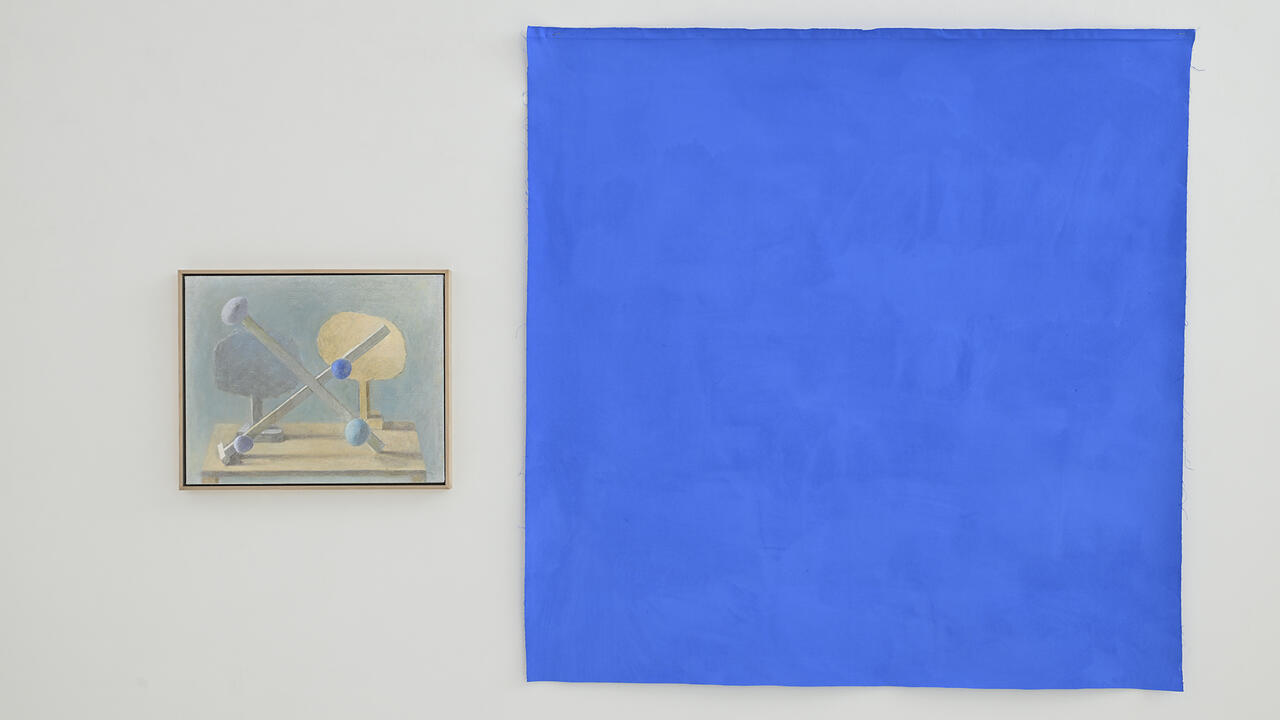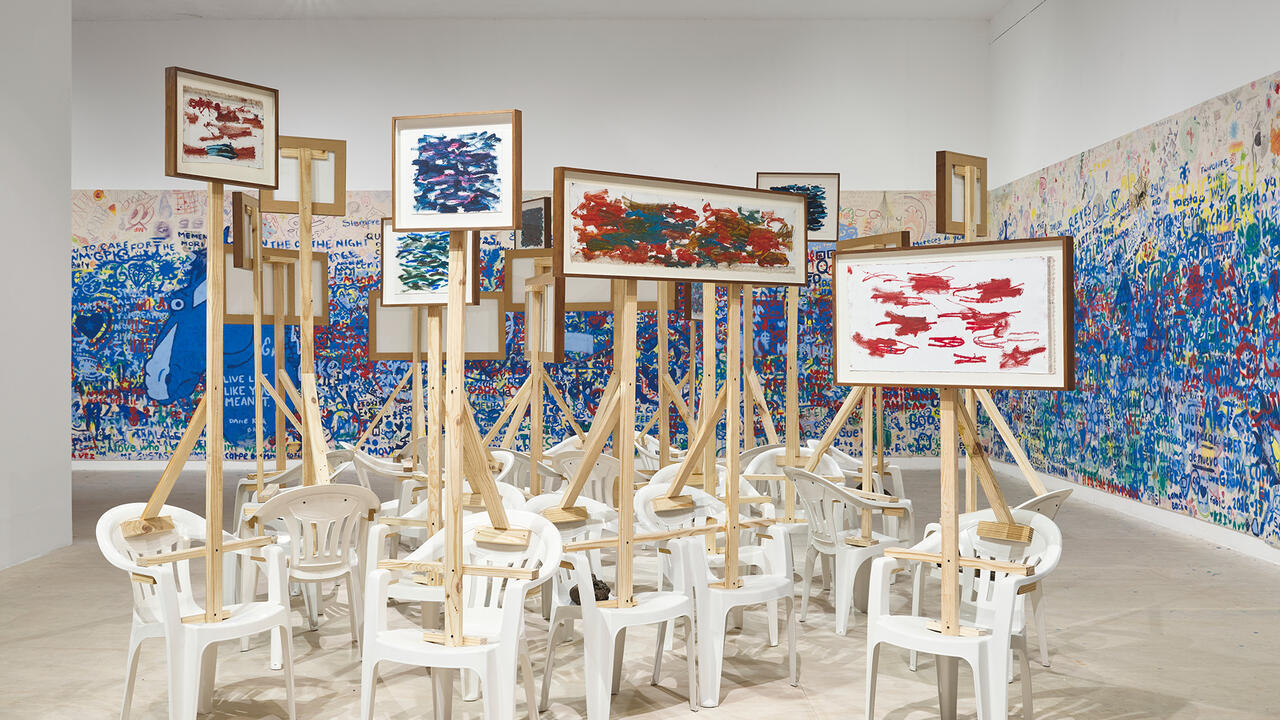Patricia Domínguez’s Scientific Odyssey
At Cecilia Brunson Projects, London, the artist uses theories from quantum physics to weave a narrative of human connection
At Cecilia Brunson Projects, London, the artist uses theories from quantum physics to weave a narrative of human connection

The central character in the hour-long video Tres Lunas más Abajo (Three Moons Below, all works 2024) is on a mission to reconnect with her entangled particle: a concept from quantum physics whereby two linked particles can share states and communicate, even when separated by vast distances. After meeting her animal guide – a Harris’s hawk native to South America – a cyborg version of the bird perches on her shoulder as she journeys towards her entangled counterpart. On the way, she uncovers a petroglyph hidden in the sand, meets a pair of entangled Pleiadians from Andromeda, who hand her a broom with which to cleanse herself before she can re-entangle, and heads to the European Organisation for Nuclear Research (CERN), where she dons a hard hat and visits the Antimatter Factory and Deep Underground Neutrino Experiment.

In the gallery, two robotic hawks (Rocky 1 and Rocky 2) flash their red laser eyes across the walls and artworks, and onto the large flatscreen on which the video plays, which is installed within a golden wall relief made of recycled acrylic. Also embedded within this relief are several watercolours which visualize apparent occurrences of transcendence – a woman levitating at the centre of the solar system (Busco a mi partícula entrelazada. No sé si esta en Andrómeda o en una rueda de auto [I’m Looking for my Entangled Particle. I Don’t Know if It’s in Andromeda or in a Car Wheel?]) and connecting with the three moons of Mars and Earth via colourful channels of energy (Acaricio a mis tres lunas interiores [I Caress my Three Inner Moons]) – as well as technical depictions, including the motherboard of a sidereal clock (Me trago el reloj sideral [I Swallow the Sidereal Clock]).

The culmination of a residency which involved time at CERN and the European Southern Observatory in Chile, the video raises questions about the material and formal choices artists make in order to communicate issues of environmental dysregulation and sustainability. For Domínguez, part of this work is a recognition of both the differences and the similarities between the experimental framework of science and the empirical wisdom of ancestral spirituality – a field the artist immersed herself in during an extended stay with an indigenous healer in Chile.
The work is haunted by an awareness of the fractured relationships humans have with animals, the planet and the wider universe, engaging with topics ranging from trans-species psychology to astronomy, indigenous wisdom and quantum physics. As our protagonist, who embodies the science-fiction trope of the last human on earth, makes her way across space and time towards her entangled particle, she discovers ‘ways to generate energy that don’t depend on squeezing Gaia’. Moving through the desert and the laboratories at CERN, she touches surfaces and equipment with a gesture that evokes both a blessing and an operative interaction with a touchscreen. The work’s sci-fi feel is amplified by its videogame-style narrative arc and fantasy aesthetics, which include graphic synthetic bodysuits and techno-symbolic jewellery.

The environments the central character passes through suggest a future in which advanced technology is part of the process of reconnecting with nature, but that doesn’t mean the presence of such technology is innate. This tension between the technological and the natural seems to dissipate when, towards the end of the video, the footage switches from digital to analogue, with shots of sunlight shimmering on water, flowers blowing in the breeze and horses cantering across a field. This glimpse of a more rudimentary, idyllic world is what she sees as she dreams her way to an awareness of her true nature and the long-awaited re-entanglement with her lost kin.
Patricia Domínguez’s ‘Three Moons Below’ is on view at Cecilia Brunson Projects, London, until 25 October
Main image: Patricia Domínguez, Tres Lunas más Abajo [Three Moons Below], 2024, analogue photograph. Courtesy: the artist; photograph: Emilia Martín. Produced with the support of Fundación Botín, Arts at CERN, ESO Observatories, Pro Helvetia Southamerica, Corporación Chilean de Video, Ministerio de las Culturas, las Artes y el Patrimonio de Chile, and Cecilia Brunson Projects.




















